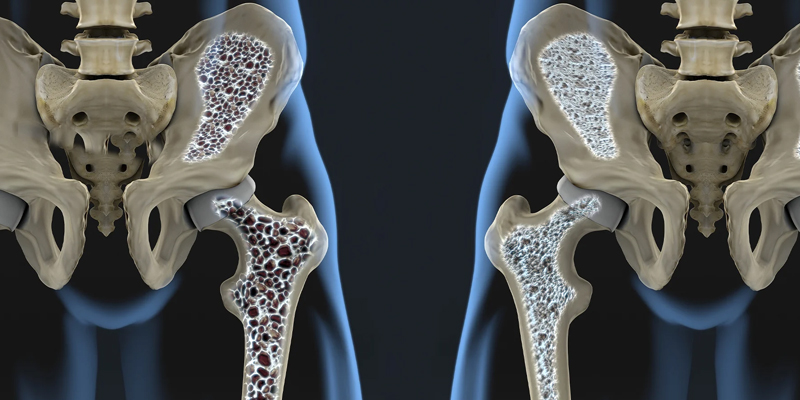Osteoporosis
Osteoporosis is a condition characterized by weak, brittle bones that are more prone to fractures. It occurs when the body loses too much bone, makes too little bone, or both. Bone is a living tissue that is constantly being broken down and replaced, and in healthy individuals, new bone formation typically outpaces bone loss. However, in osteoporosis, this balance is disrupted, leading to a decrease in bone density and strength.
Osteoporosis is often referred to as a "silent disease" because it progresses slowly and usually does not cause symptoms until a fracture occurs. Common sites for osteoporotic fractures include the hip, spine, and wrist, though fractures can occur in other bones as well. Fractures due to osteoporosis can cause significant pain, disability, and loss of independence, particularly in older adults.
Risk factors for osteoporosis include:
- Age: Risk increases with age, as bone density naturally declines over time.
- Gender: Women are at higher risk, especially after menopause when estrogen levels decrease.
- Family History: A family history of osteoporosis or fractures increases the risk.
- Race and Ethnicity: Caucasian and Asian individuals are at higher risk.
- Low Body Weight: Having a small, thin frame or low body weight increases the risk.
- Smoking and Alcohol: Smoking and excessive alcohol consumption can weaken bones.
- Dietary Factors: Inadequate calcium and vitamin D intake can contribute to bone loss.
- Inactive Lifestyle: Lack of weight-bearing exercise can lead to weaker bones.
- Certain Medications and Medical Conditions: Long-term use of corticosteroids, certain medical conditions (such as rheumatoid arthritis and digestive disorders), and hormone-related conditions can increase the risk.
Prevention and management of osteoporosis involve lifestyle changes, dietary modifications, and, in some cases, medication. Strategies to prevent osteoporosis and reduce fracture risk include:
- Regular Exercise: Weight-bearing exercises, such as walking, jogging, dancing, and resistance training, help build and maintain bone density.
- Healthy Diet: Consuming an adequate amount of calcium and vitamin D through diet or supplements supports bone health.
- Avoiding Smoking and Excessive Alcohol: Quitting smoking and limiting alcohol consumption can help prevent bone loss.
- Bone Density Testing: Screening tests such as dual-energy X-ray absorptiometry (DXA) measure bone density and assess fracture risk.
- Medications: Medications such as bisphosphonates, hormone therapy, and other drugs may be prescribed to prevent bone loss or strengthen bones.
Early detection and intervention are crucial for managing osteoporosis and reducing the risk of fractures. A comprehensive approach that includes lifestyle modifications, proper nutrition, and medical management can help individuals with osteoporosis maintain bone health and prevent fractures.
